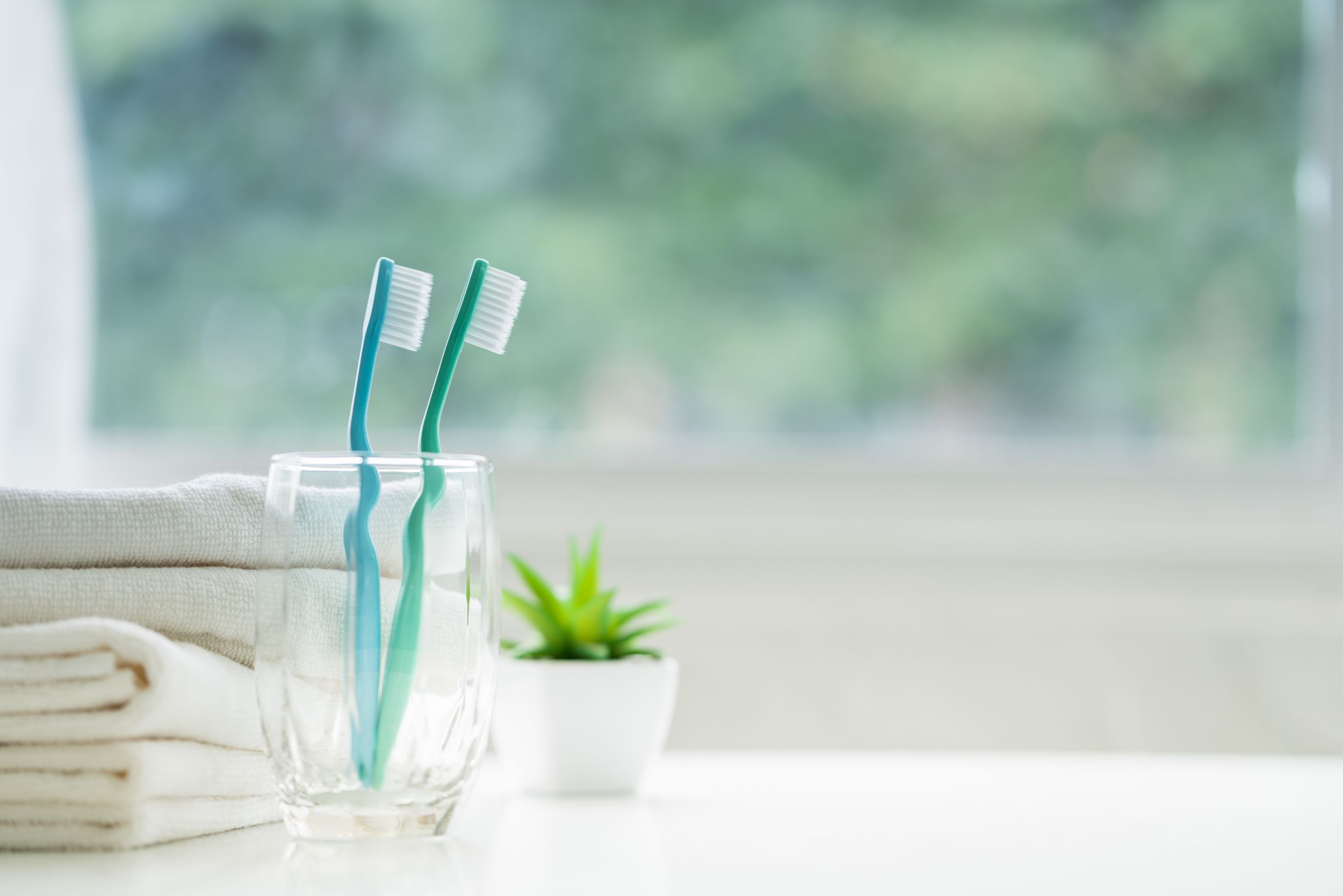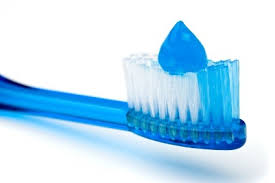How to brush your teeth properly
It is important to know how to brush your teeth as part of your daily dental care routine. Here are a few tips to maintain a healthy smile:
- Brush your teeth twice daily with a soft-bristled brush. Brushes should be sized and shaped to fit your mouth, so you can easily reach all areas.
- Your toothbrush should be replaced every three to four months, or sooner if the bristles are frayed. If your toothbrush is worn down, you won’t be able to clean your teeth effectively.
Using the proper brushing technique involves the following steps:
- Angle your toothbrush 45 degrees toward your gum line.
- Gently stroke back and forth with the brush in short (tooth-wide) strokes.
- Be sure to brush the outer surfaces, the inner surfaces, as well as the chewing surfaces of the teeth.
- The inside surfaces of your front teeth can be cleaned by tilting the brush vertically and making several upward and downward strokes.
What are the 10 Steps on How to Brush Your Teeth Properly
Brushing your teeth properly is essential to good oral health. Correct brushing is the only way to remove the bacteria that produce plaque, which, if left undisturbed will cause cavities and gum disease.
You probably think that brushing your teeth properly is something you already know how to do. After all, don’t we learn how to brush our teeth when we are young? Misconceptions on how to brush correctly are common.

- Use the right toothbrush.
- Use a soft-bristled toothbrush. Choose a toothbrush with a handle that fits your hand comfortably. The head must be small enough to reach all your teeth
- Replace old toothbrushes.
- A toothbrush will need to be thrown out after just a few months of use. If the bristles become worn out or frayed, it’s time to get a new one.
- Brush twice a day.
- Saliva and bacteria forms into plaque in just eight hours, which means that brushing only once per day guarantees lots more plaque on your teeth.
- Use the right toothpaste.
- Use toothpaste that has fluoride in it. Fluoride lessens plaque by lessening the bacterial count in your mouth and strengthens tooth enamel.
- Use the correct technique.
- Apply a pea-sized amount of toothpaste and brush in small circular motions. Hold your brush at a 45°angle towards the gumline whilst brushing your teeth.
- Be gentle.
- Vigorous brushing does not mean you are doing a better job of cleaning. In fact, it damages tooth enamel and your gums. A worn-out toothbrush is a sign that you are brushing too vigorously.
- Brush for long enough.
- You should spend about two minutes brushing your teeth, working your way slowly around your mouth.
- Brush your tongue.
- Bacteria that grows on the tongue is hard to remove. Mouthwash is not very effective, so brushing is necessary. Brush your tongue without toothpaste, reaching as far as it’s comfortable.
- Rinse your toothbrush.
- If you don’t clean your brush properly, you will reintroduce bacteria the next time you brush your teeth. Wash your toothbrush under the tap for a few seconds, then allow it to dry out.
- Use floss.
- As effective as teeth brushing is, it can’t do the job on its own. Plaque accumulates between the teeth and flossing is the only way to remove it.

Brushing your teeth is a vital part of your oral hygiene! Brushing too hard, or not enough, can have major implications on your oral health. Tooth brushing mistakes can contribute to dental issues like cavities, bleeding gums, gum degradation, and other problems.
10 mistakes people often make when brushing their teeth:
1) Brushing too hard
1) Brushing too hard: This is the most common mistake people make. It’s the motion of your toothbrush that cleans your teeth. You can wear down your enamel and cause sensitivity if you brush too hard. If your bristles are slayed apart, that is a sign of vigorous brushing.
2) Using a hard-bristled toothbrush
2) Using a hard-bristled toothbrush: Can result in enamel and gum tissue loss. This can be very sensitive. Dentists recommend using a soft-bristled toothbrush.
3) Not changing your toothbrush regularly
3) Not changing your toothbrush regularly: Dentists recommend changing your toothbrush every 3 months as it can lose its effectiveness if used for longer.
4) Using the wrong toothpaste
4) Using the wrong toothpaste: Some of the added features in today’s toothpastes can come at a cost to your oral health. The abrasive chemicals and textures intended to whiten your teeth can strip them of the enamel.
5) Not brushing your tongue
5) Not brushing your tongue: Your tongue harbors germs and is often the cause of bad breath or halitosis. When finished brushing your teeth, brush your tongue with your toothbrush. This helps to reduce the number of germs present in your mouth and improves your breath.
6) Not brushing long enough
6) Not brushing long enough: Dentists recommend brushing for 2 minutes. Less time than this is not long enough to clean your teeth properly and remove all food debris and plaque.
7) Brushing in the same pattern everyday
7) Brushing in the same pattern everyday: There’s a good chance you are missing the same areas if you brush in the same pattern every day. Changing the pattern ensures that you clean all your teeth properly.
8) Brushing the wrong area of the tooth
8) Brushing the wrong area of the tooth: You should brush your teeth at a 45-degree angle along the gumline. The most important areas to brush as an adult are along the gumline, in between the teeth and at the back of your teeth.
9) Not flossing
9) Not flossing: Flossing is vital for good oral hygiene as it helps to prevent cavities and bad breath. Brushing only reaches certain parts of your teeth therefore flossing is necessary to ensure your teeth are cleaned thoroughly.
10) Brushing too much or not enough
10) Brushing too much or not enough: Dentists recommend brushing your teeth twice a day, once in the morning and once before going to bed. Brushing your teeth once a day is not enough and 3 times a day is too much
How can you tell if you are brushing your teeth effectively?
Here are 4 ways to check your brushing and flossing skills:
1) The Tongue Test
1) The tongue test: Move your tongue across the surface of your teeth immediately after brushing and flossing. They should feel smooth and slick.
2) Floss Check
2) Floss check: Run a piece of floss up and down your teeth. If your teeth are clean, the floss should ‘squeak’ as you move it up and down.
3) Disclosing agents
3) Disclosing agents: This product contains a solution that dyes any leftover plaque on your teeth. It does not stain your teeth and helps to uncover the areas that require more attention when brushing.
4) Regular Dental visits:
4) Regular Dental visits: Regular Dentist and oral hygienist visits are imperative for good oral hygiene. Dental cleanings help to remove hard to reach plaque and calculus that can’t be removed with normal teeth brushing.
SciVision
Meditrader
Laser dentistry
Cosmetic dentistry
Prosthodontic dentistry

Endodontic dentistry
Implant dentistry
Orthodontic dentistry
Paediatric dentistry

Maxillofacial dentistry



